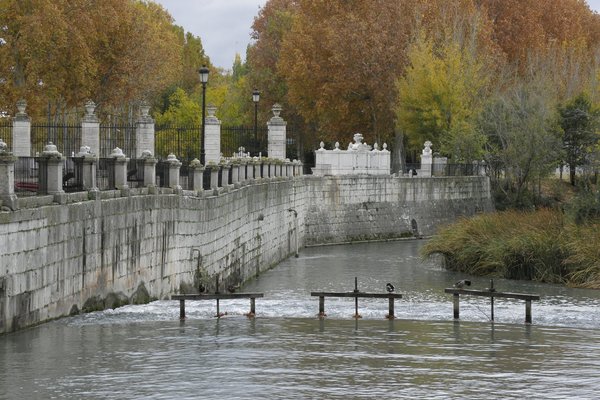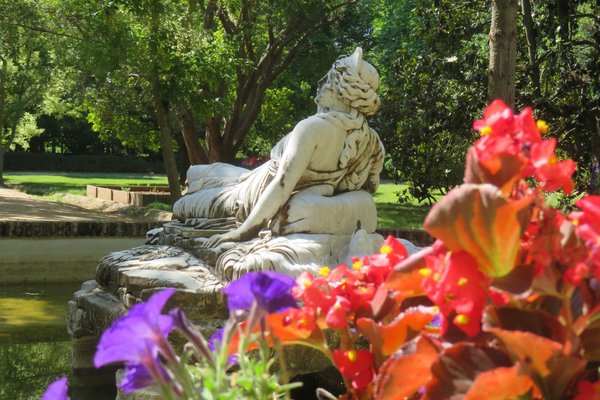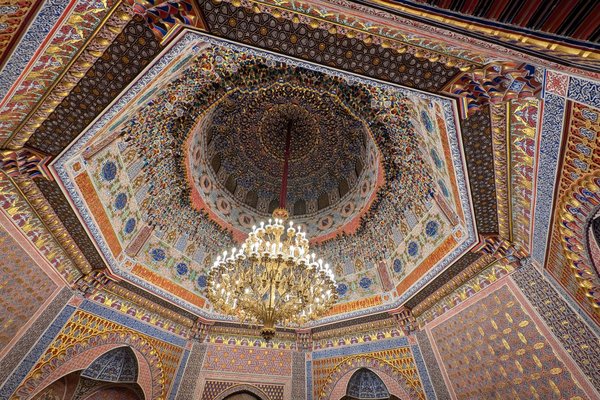Spain
Aranjuez
Aranjuez Cultural Landscape represents a varied landscape design developed over centuries.
It started out as the Royal Site of King Philip II in the 16th century, with a private country palace and extensive waterworks using the waters of the adjacent Tagus and Jarama rivers. In the 18th century, it was further enlarged with a town and roads by using geometric principles, with lines of trees as one of the most prominent characteristics.
Community Perspective: This essentially is a cleverly marketed Royal Palace (“the interior here was so ghastly it left an impression”, according to our palace expert Ian) plus its gardens (which are the best part of the site overall). Aranjuez overall is a nice and easy day trip from Madrid.
Site Info
Official Information
- Full Name
- Aranjuez Cultural Landscape (ID: 1044)
- Country
- Spain
- Status
-
Inscribed 2001
Site history
History of Aranjuez
- 2001: Inscribed
- Inscribed
- Type
- Cultural
- Criteria
- ii
- iv
Links
- UNESCO
- whc.unesco.org
- Official
-
- aranjuez.com — Aranjuez
All Links
UNESCO.org
- whc.unesco.org — whc.unesco.org/
Official Website
- aranjuez.com — Aranjuez
Community Information
- Community Category
- Cultural Landscape: Clearly defined
Travel Information
Undergoing Restoration or Repair
Madrid hotspot
Recent Connections
-
European Route of Historic Gardens
Aranjuez Cultural Landscape (Link)
-
Perfect Inscriptions
2001 -
Alexandre Dumas
In his work "Impressions de voyage – De…
Connections of Aranjuez
- Individual People
-
-
Alexandre Dumas
In his work "Impressions de voyage – De Paris à Cadix", Dumas recounts his visits to Burgos, Madrid, the Escurial, Aranjuez, Toledo, Jaén, Granada, where he visits the Generalife and the Alhambra and Cordoba. In Seville, Dumas visits, among other places, the Alcazar and the Giralda. -
Visited by Alexander von Humboldt on his travels
Apr 20 - Jun 5 1799 stayed with the Spanish King -
Charles V
Bought it as hunting grounds
-
- Geography
- Trivia
-
-
Modelled after
Petit Trianon at Versailles (artificial streams and ponds) (AB ev)
-
- History
-
-
Spanish Royal Residences
Aranjuez became one of the Royal Estates of the Crown of Spain in 1560, during the reign of Philip II. Until 1752, only the royalty and nobility were allowed to dwell in the town. (wiki)
-
- Architecture
-
-
Chinoiserie
Chinese Kiosks of the Prince's Garden & tile panels -
French (formal) garden
-
Ideal City
The city of Aranjuez was developed as an Enlightened City from 1750 on, with strict geometry. -
Rococo
Several of the palace's rooms are in rococo style, including the brilliant Gala Dining Room -
Brick architecture
The palace is made out of brick -
Neoclassical architecture
Casa del Labrador -
Moorish revival
Gabinete arabe in Aranjuez Royal Palace.
-
- World Heritage Process
-
-
Perfect Inscriptions
2001
-
- Religion and Belief
-
-
Franciscan Order
Real Convento de San Pascual: founded by King Charles III of Spain as a Franciscan monastery and built from 1765 to 1770 (wiki)
-
- Human Activity
-
-
Irrigation and drainage
Several waterworks, dams, canals to irrigate the gardens and prevent them from flashfloods -
Locations for playing sport
Plaza de Toros, one of Spain's oldest bullrings (1797) -
Boats
All royal pleasure boats are kept in Museo de Faluas, part of Royal Palace -
Historical Bullrings
Plaza de toros de Aranjuez (1797)
-
- Constructions
-
-
Railways
Railway station (1851), on the first railway line in Spain, from Madrid to Aranjuez -
Obelisk
In the Island Garden: " Following the fashion of that time, and evoking Egypt Idols, the composition also includes an Obelisk coming from the personal collection of King Phillip V." -
Sphinx
Two to the side of the palace, before entering the Island Garden -
Hospitals
Hospital de San Carlos, ordered by Charles III in 1750 -
Theatres and Opera Houses
Teatro Royal (1769)
-
- WHS on Other Lists
-
-
European Route of Historic Gardens
Aranjuez Cultural Landscape (Link)
-
Melina Mercouri Prize
(Jardin Principal) - 1999 Honourable mention -
Network of European Royal Residences
Patrimonio Nacional (Spain)
-
- Timeline
-
-
Built in the 16th century
"The most important general factor which makes Aranjuez and its landscape distinctive and a strong candidate for World Heritage status is the way in which it has been shaped and developed by the interests of the Kings and Queens of Spain and their Courts between the early 16th and mid-19th centuries."
-
- WHS Hotspots
-
-
Madrid hotspot
45min by train and bus
-
- Science and Technology
-
-
Botanical Gardens
In 1555, Philip II requested the creation of a botanical garden on his grounds. It succesfully received and cultivated flora from America and Asia (nom fil)
-
- Visiting conditions
-
-
Undergoing Restoration or Repair
Aranjuez, Casa del Labrador (scaffolding all around on the outside & no visit of the inside possible) -
Strict no-photography policy inside
No photography allowed inside the palace.
-
News
No news.
Recent Visitors
Visitors of Aranjuez
- 2Flow2
- Adam Hancock
- Adolfo
- Afshin Iranpour
- Aitia
- Alberto Rodriguez Gutierrez
- aleserre
- Alexander Barabanov
- Alexander Lehmann
- Alexander Parsons
- Alikander99
- A. Mehmet Haksever
- Ana Lozano
- Antonio J.
- Argo
- AS
- Aspasia
- Atila Ege
- AYB
- Badwater
- BaziFettehenne
- Bill Maurmann
- Bin
- Boj
- bossc
- Bruno_Pires
- Can SARICA
- Carlos Sotelo
- Caspar
- chenboada
- Chinmaya
- Christian Wagner
- Christoph
- Christravelblog
- Claire Bradshaw
- Clyde
- Cody Ayers
- Corinne Vail
- Csaba Nováczky
- CugelVance
- czesioszpachelka
- Dagmara
- Daniela Hohmann
- Daniel Chazad
- dankir
- Dan Pettigrew
- David Aaronson
- David Berlanda
- David Marton
- Dimitar Krastev
- Dimitrios Polychronopoulos
- Dolemite92
- Don Irwin
- Dorejd
- Dwight Zehuan Xiao
- Elaine McArdle
- eljx1988
- Els Slots
- Erik Jelinek
- Errol Neo
- Fan Yibo
- Feldhase
- Felicité
- Filip Murlak
- FK
- Frederik Dawson
- George Gdanski
- GeorgeIng61
- grimloch
- Harald T.
- Harry Mitsidis
- headventure
- Hubert
- Iain Jackson
- Ian Cade
- Ingemar Eriksson
- Ivan Rucek
- Jakob F.
- Janina Lehmann
- Jarek Pokrzywnicki
- Jasam
- Javier
- Javier Coro
- Jay T
- Jean Lecaillon
- Jeanne OGrady
- Jezza
- JL
- João Aender
- Joel on the Road
- Jonas Hagung
- Jonas Kremer
- Jon Eshuijs
- Joyce van Soest
- Jurre
- Kbecq
- Ken DJ
- Klaus Freisinger
- Krzysztof B
- Kurt Lauer
- Kyle Magnuson
- La Concy
- lappelduviiide
- Lara Adler
- Laurine
- lindaann
- Lisu Marian
- Little Lauren Travels
- Loic Pedras
- Luboang
- Luis Filipe Gaspar
- Maciej Gil
- Malgorzata Kopczynska
- Martin
- Martina Rúčková
- MAURO PODDA PANI
- MaYumin
- MH
- M. Huineman
- Michael Novins
- Michael Turtle
- Mikan22
- Mikko
- MMM
- Mo-han Je
- Mohboh
- Msarmiento1979
- nan
- napalm
- Nihal Ege
- PabloNorte
- Patrik
- Paul Schofield
- Peter Lööv
- Petteri
- Philipp Leu
- Philipp Peterer
- Pink Bunny
- Piotr Wasil
- Porcho
- Randi Thomsen
- Rick Ohm
- RobRos
- Roger Ourset
- Roman Bruehwiler
- Samy G
- Sandmann15
- saraleonela
- Schnitzel
- scubarrie
- SDMArado
- Sergio Arjona
- Shandos Cleaver
- shoaibmnagi
- sime147
- Simonf
- Solivagant
- Stan
- Stanislaw Warwas
- Svein Elias
- Szucs Tamas
- Tamara Ratz
- Taotao Chen
- Tarquinio_Superbo
- Thomas Buechler
- Thomas Harold Watson
- Thomas van der Walt
- Tim Allen
- tony0001
- triath
- Vanessa Buechler
- Viaje al Patrimonio
- voyager
- Walter
- Wojciech Fedoruk
- Xander Huang
- Xiong Wei
- Xiquinho Silva
- Yongcheng Liu
- Zhenjun Liu
- Zoë Sheng
- Zos M
- ZZSong
Community Reviews
Show full reviews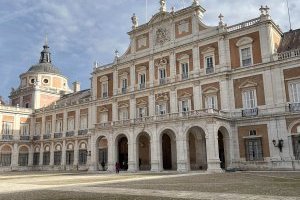
Some World Heritage Sites loom large and will stun and wow people no matter who you are or where you are travelling from. I think of my time at Victoria Falls or Jerusalem and how immediately accosting those were. Aranjuez is not a site such as those, and that's okay, it's in the "majority" of sites. Aranjuez, like many of the historical cultural sites, will vary in what it offers to the visitor based on how much you effort you put into learning about it.
So what is Aranjuez?
Aranjuez was the "summer palace" location that the Spanish monarchs would retire to in the 1700s and 1800s. It has a quite massive aforementioned palace that was expanded over time, as well as a large garden/park that still exudes immense beauty, especially during the warmer months. There is a waterway that was artificially built by the monarchs so they could have boating events near the palace, and the original city center (which is removed a little bit from the palace) was originally designed to only allow members of the royal court to reside there. As a result, Aranjuez becomes a bit unique following such an "exclusive" royal history.
What type of background you come from may color how you experience Aranjuez.
Perhaps you've never been to Spain (or maybe even Europe!) before and this is one of the first handful of sites you are seeing. In that case, you're going to love Aranjuez. The size of the …
Keep reading 0 comments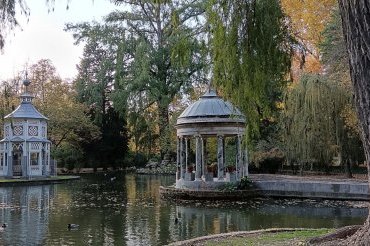
Well, after a decade or so I've finally gone back to Aranjuez! here are my thoughts.
First off I think it's interesting noting that aranjuez was proposed fairly late among the Spanish sites and as a cultural landscape.
As many people have pointed out the actual highlight of the site are the gardens.
The palace is indeed kinda ghastly. The rooms were renovated in the 19th century when Spain, and particularly the crown, were in full crisis. The result is some interior design I wouldn't wish on my worst enemy. You can actually skip it tbh.
The city itself is rather surprising, in the sense that I have no idea why Unesco actually allowed its inscription. A bit of context: Spanish royal sites were thought of as a retirement sites for the monarchs, so they had no population other than the people in charge of the palace and gardens. This changed with Charles III which built up towns associated to each royal site. Spain has for a long time tried to get Unesco to extend the site of El escurial to include the city of San Lorenzo, which was built during this period. Unesco "wasn't thrilled with the idea" . So imagine my surprise when I went back to aranjuez and found out that at large its city centre is in a comparable state. I mean the city and, particularly its plan, beautifully illustrates enlightened ideals of urban planning, but that's hardly unique in Europe.
…
Keep reading 0 comments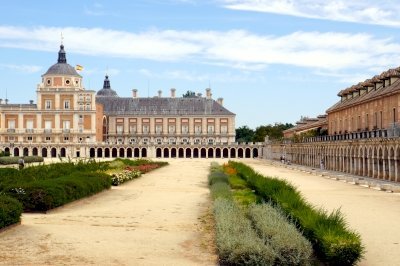
'Die schönen Tage in Aranjuez sind nun zu Ende.' The drama Don Carlos by Friedrich Schiller starts with these words. I am not sure whether Schiller is historically correct when describing the reign of Philip II in his play. Correct is that Philip II declared Aranjuez a 'Real Sitio' in 1560, and that he commissioned the construction of the Palacio Real in the same year. My impression was also that the best days for Aranjuez are gone when I visited the site in May 2019. But not because the palace and gardens were in bad condition (on the contrary, everything was nice and well maintained). It was rather because the area around the palace was almost deserted on that weekday morning.
Castles and palaces are not my favourite world heritage sites. But there are a few exceptions on the list where I was pleasantly surprised. Aranjuez, however, was not one of them. The interiors are more or less the same sequence of rooms as in other European palaces, and similarly boring. Only two rooms are exceptional: the Porcelain Room, which is entirely covered with porcelain reliefs, and the room with 200 small Chinese paintings on rice paper, depicting rural life right next to torture scenes.The Palacio Real impresses mainly by its size. In the 18th century two side wings were added and the whole complex was converted into a Baroque palace. My photo is the view of the palace from the south, from the Plaza de …
Keep reading 0 comments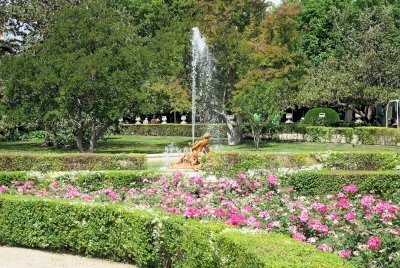
I love gardens, so I was rather excited to choose Aranjuez Cultural Landscape as the first central Iberian World Heritage Site to visit after I arrived in Madrid for a long weekend last May. In truth, the gardens were not as impressive as others I have visited, but I did appreciate the laidback atmosphere of this suburb that began as a royal estate in the 16th century. After arriving in town, I started my tour indoors with the palace, so as to avoid a passing rain shower. The palace had many fine rooms, but since I came to Aranjuez to view the gardens, as soon as the skies brightened I was back outside. The gardens next to the palace were beautiful, however I was slightly let down by the Island Garden, which was not as well upkept as I thought it might be. I did find the water canals within the garden curious, since they reminded me of those irrigating Al Ain Oasis in UAE. It was the weir on the Tagus next to the palace that I found most fascinating, though (as noted by other reviewers). After getting a quick lunch, I strolled around the Prince's Garden, which was far more relaxing to me. I loved walking on the pathways that bordered the Tagus River, and took time to rest and read on a bench overlooking a Chinese garden further inside the park. Aranjuez made for a pleasant introduction to central Spain, and was definitely worth touring before visiting …
Keep reading 0 comments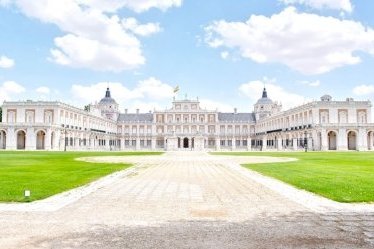
When I looked at the list of all World Heritage Sites around Madrid, Aranjuez was the least interesting site in my initial opinion; however, after visited the place, it became the second least interesting site since Alcala de Hanares won the position. Since I already saw the Royal Palace in Madrid twice including its grand royal park couple of month ago, I was not happy to have a trip just to see another Spanish royal palace, so pairing it with Cuenca was a good idea.
From Madrid I drove to Aranjuez, the city was quite lovely with many greens and fine houses, some kind of prosperous neighborhood, but when I reach city center, the view of ideal royal city welcomed me with grand scale, Grand palace on the right, French landscape gardens on the left and large square with beautiful San Antonio de Padua Church at the far end in the middle. I drove into a small alley next to palace complex, the buildings, pavement, trees were all stately and beautiful design, however those large open spaces in front of the church and next to the palace with few people around made the city a bit desert and lifeless and the area in front of the palace were shockingly rundown with shabby gardens and abandoned and ruined buildings. I toured the interior of the Aranjuez Palace, as other reviews mentioned, certain rooms especially the Moorish room and porcelain room were quite stunning and the display of royal gowns …
Keep reading 0 comments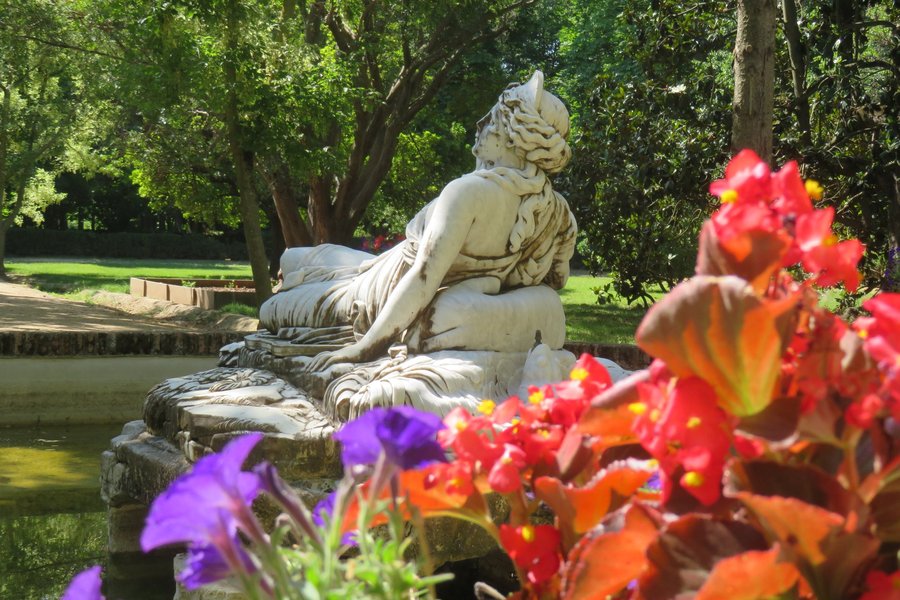
Previous reviews left me not expecting much from Aranjuez. However, when the sky is perfectly blue, the gardens are a lush green, and my only alternative was to join my spouse shopping? Aranjuez turned out to be a delightful couple hours! Originally, I did not even include this WHS in my itinerary, since Segovia and El Escorial were my primary focus. Nevertheless, the train was simple, affordable, and the weather was excellent (though hot).
The Garden Landscape and Design of Aranjuez
I spent most of my time exploring the gardens, which really are quite extensive. There are so many small treasures to be found, from playful fountains, to an aviary, and even a "Chinese" pond. Overall, It was please to stroll this palatial landscape, while not bothering to enter any of the buildings.
The cultural landscape pull of this world heritage site makes it unique enough. To summarize, the water landscape (rivers, ponds, dams, ditches), the agricultural landscape (orchards and nurseries, stock-breeding farms, meadows), and the landscape for leisure (ornamental gardens) all make up a rich component to Aranjuez that is best appreciated in beautiful weather.
Another visit specifically informed by our community of reviewers, many thanks!
Keep reading 0 comments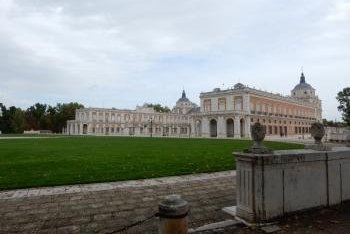
My expectations for Aranjuez were not too high - another royal palace close to a big capital -, but it's very easy to reach by commuter rail from Madrid, and the palace was actually quite interesting and well-presented (especially the Porcelain Room). I then went for a walk through the surrounding parks along the Tejo River, which feature many different fountains. It was an enjoyable half-day excursion, but as mentioned in other reviews, the site does not add a lot of new value to the WH list, as evidenced by the fact that Spain had to use the trick/work-around with the cultural landscape to get this site inscribed.
Keep reading 0 comments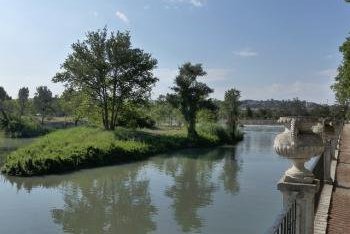
I visited this WHS in June 2015. This is one of many other WHS made up of gardens and palaces and it certainly isn't one of Europe's best. It's location helps it a great deal as it is a pleasant half day trip from Madrid or Toledo. However, I very much prefered the Escurial's interior although much more crowded. The highlights of my visit were the Island Garden and the Prince's Garden. That said, I felt that they offered no real OUV but more of a pleasant rest in the shade in what should be considered more of a national heritage site.
Keep reading 0 comments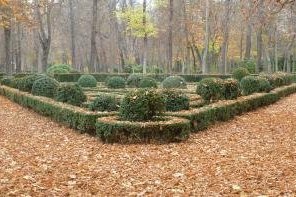
Strapping on my camera and backpack I did my duty and after a short hop on the commuter train from Madrid I landed at yet another European Royal Palace complex.
First stop the palace; fortunately I was able to whizz around in about 20 minutes. There are so many palaces like this on the list it is tough to find things that differentiate them, fortunately the interior here was so ghastly it left an impression. The Arabian Room did a fantastic job of mimicking the heights of mudejar design and then ruining it by colouring them in like an 8 year old and the Porcelain room was so horrifically over the top you couldn’t help but be impressed. The whole time I was walking around I kept on being reminded of the taste of Hyacinth Bucket (sorry that may be a slightly niche reference).
Happy to escape the interior I ventured to the gardens, and I must admit I was pretty impressed. The Island Garden was actually a really pleasant place to wander around. The carpet of autumn leaves did add to the joy of strolling around, crunching from one little fountain to the next. In fact I would say it was one of the nicest palace gardens I have been to.
The advisory body report states that the historic centre of the town may “well have been considered for World Heritage status in its own right”. I think that is a little generous, I would probably award it the …
Keep reading 0 comments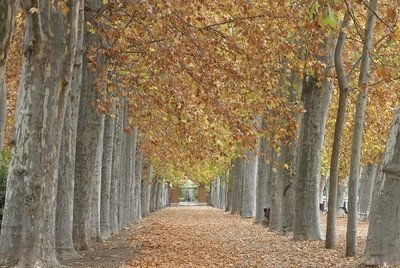
The AB evaluation of Aranjuez comes with a warning: we already have allowed 8 European Royal Palaces and their gardens on the List, this should be sufficient! The Spanish however were clever enough to propose this site as a Cultural Landscape, where the palace comes in as a side note. I found the nomination file very impressive; it does a good job of explaining the history of the manmade landscape, where the use of irrigation and dams has turned a swamp into a green oasis. It also emphasizes the importance of the parks for botany, as Philip II was an early collector of American and Asian tree species.
Except for a minor round around Aranjuez town to look for a restaurant (where I landed at the recommended La Venta for a 10 EUR 3-course Menu del Dia), I limited my visit to the palace and its gardens. I started with a stroll through the Island Garden, which is decorated with many objects including a number of statues of ancient gods. This is also where the waterworks can be seen, these include dams, canals, and bridges. And it displays the tree-lined paths that characterize Aranjuez.
Suddenly it started to rain a little, so I decided to check out the interior of the palace too. Whenever I visit palaces these days, Ian Cade's quote "palaces bore me rigid" directly comes to my mind. And yes, I too have shuffled from one boring room to the other in many palaces around …
Keep reading 0 comments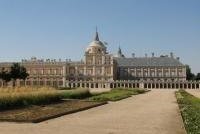
I visited the royal palace at Aranjuez on my first day in Spain after an overnight flight from Montreal to Madrid. It was my first WHS in Europe. The train ride from Madrid to Aranjuez was less than an hour and it makes a perfect half-day trip from Madrid. The palace has many rooms; the one that stands out the most in my memory is the Alhambra-inspired one. Unfortunately, no photos are allowed inside. However, they are allowed at the gorgeous garden nearby. The palace is no comparison to similar sites I visited later on my trip such as El Escorial but it's worth an afternoon nonetheless. I would suggest visiting this site first before the other WHS near Madrid in order to evade disappointment.
Keep reading 0 comments
